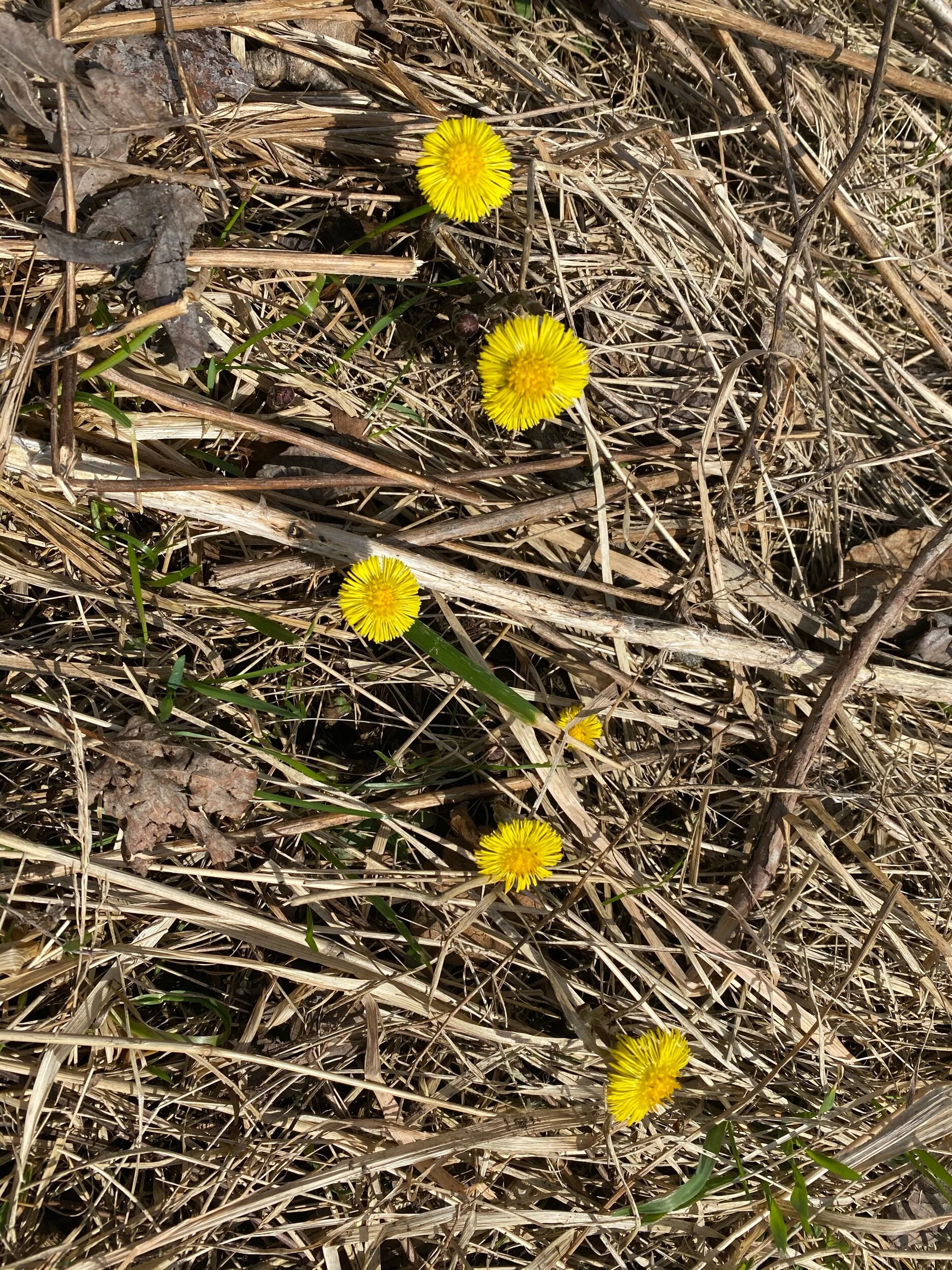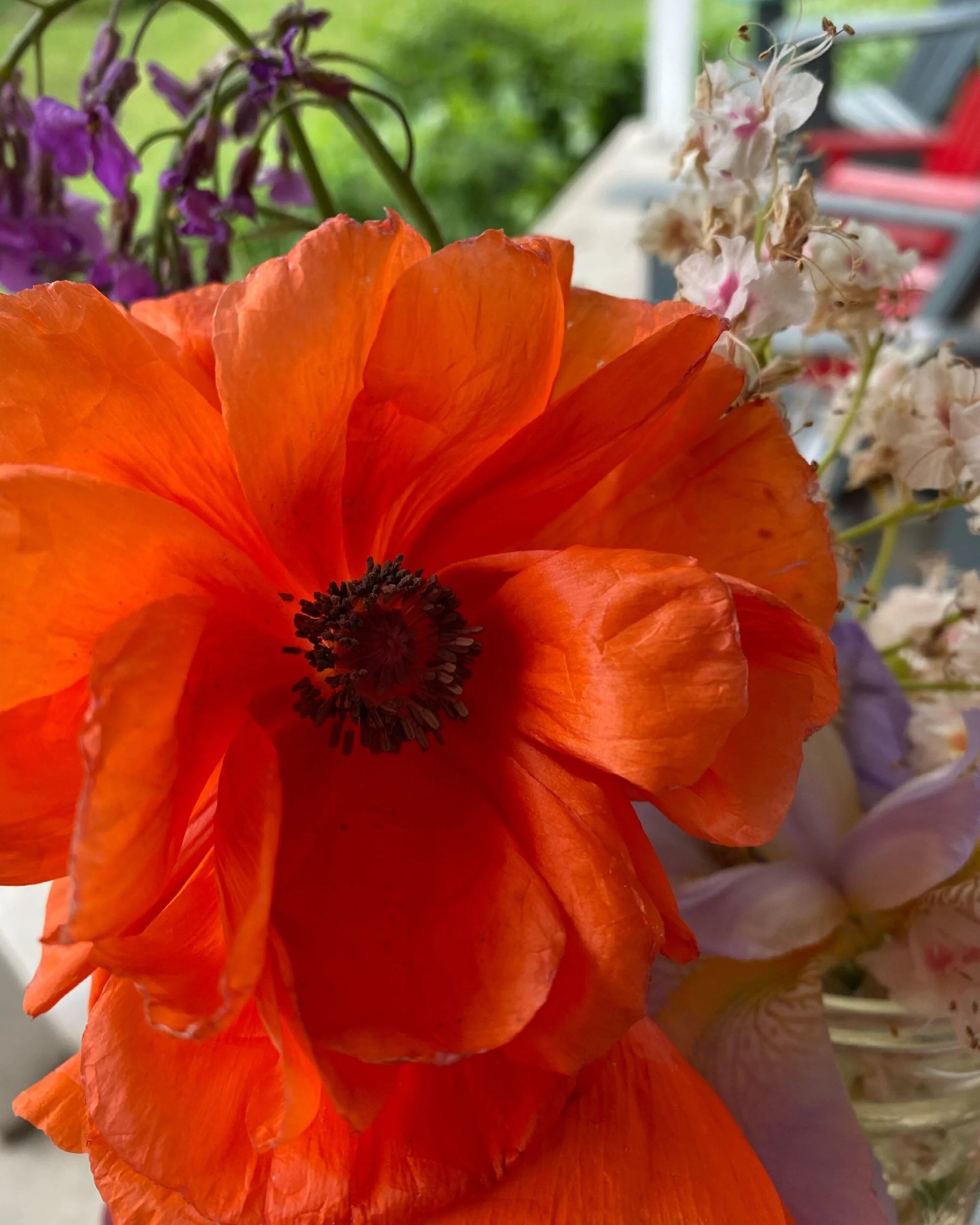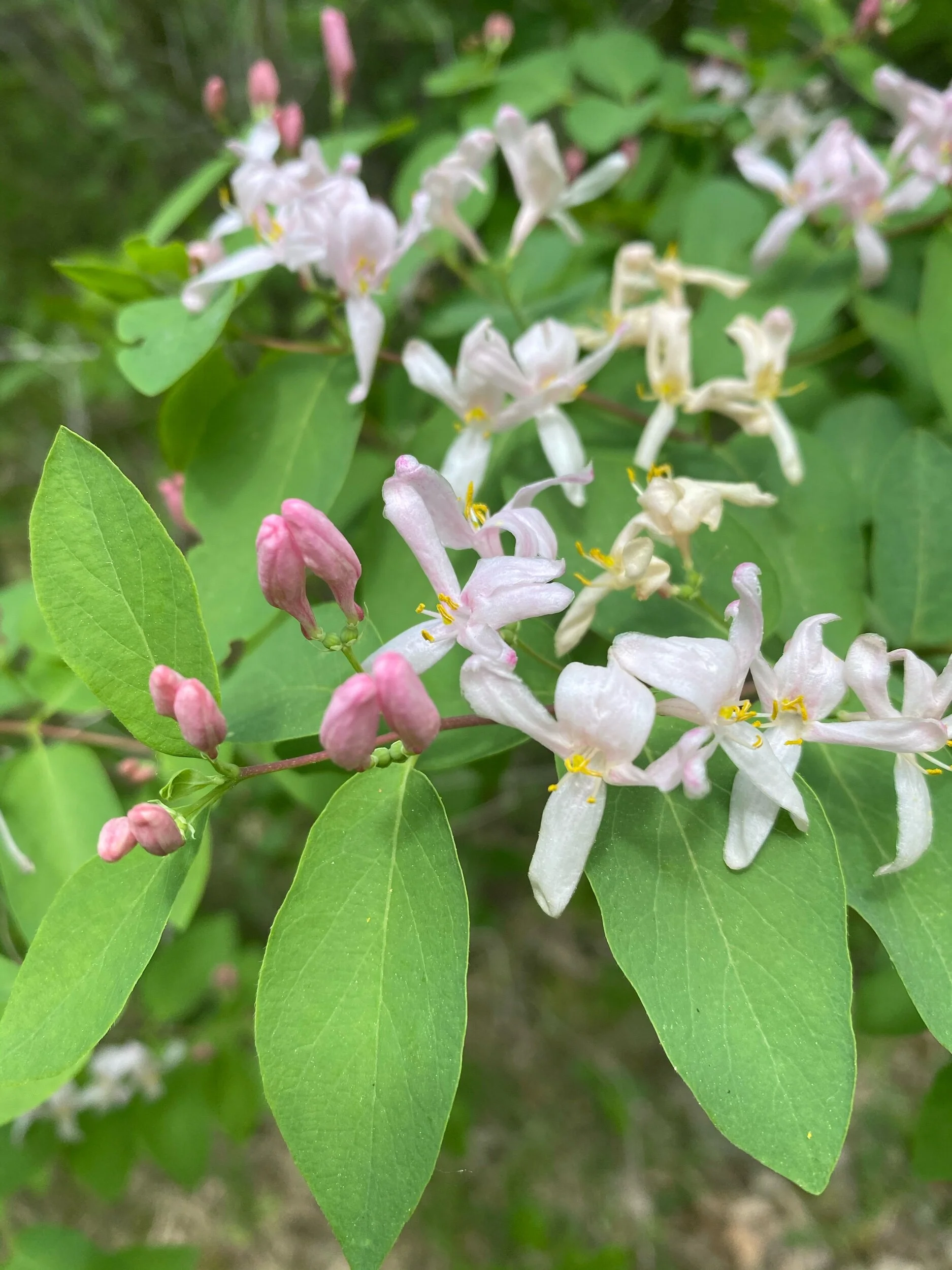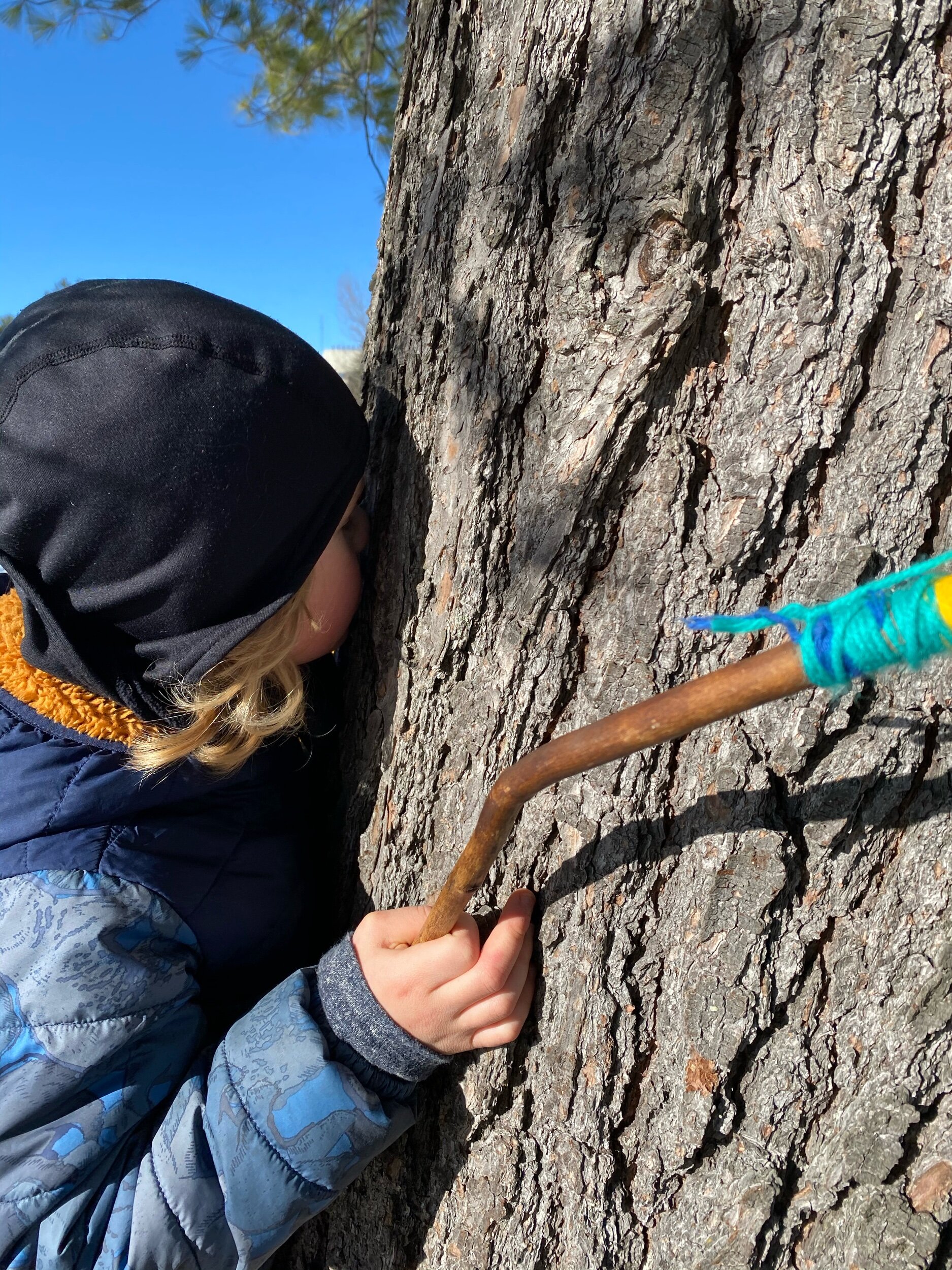If you are looking for resources, songs and poems that have been shared previously on the blog, you can use the search tool on this page.
All around is GREEN! New life is bursting forth every day. The birds are busy building nests. Signs of Spring abound. Rainy days give the earth the drink plants and trees needs to refresh and grow and make muddy puddles that are so fun to splash in!
This week we celebrate EARTH DAY. At nature school we believe that the very best way that we can take care of our Earth is by supporting children in developing deep, meaningful relationships with the plants and wildlife in their local community. We believe that this love of the natural world will lead these future adults into making choices and taking action to protect and care for this precious world.
SEASONAL POEMS:
Down in the earth in their dark winter bed
Someone is calling, the crocus said.
In colours bright they quickly dressed,
In lavender, purple and gold of the best.
Then out in the grass they dance in a ring
And call to the children, “Come out! It is spring.”
~ H. Henley
Baby seedlings wrapped up tight
In their cosy nest of night.
Gently, gently will they wake
With a little springtime shake.
Lady Spring, Lady Spring, widely loving everything.
The gnomes will tug each little root,
And green will grow each little shoot,
And as their lovely leaves unfold,
They put on flower caps of gold.
Lady Spring, Lady Spring, widely loving everything
~ W. Gerst and J. Mehta
SEASONAL SONG:
LADY SPRING
My Lady Spring is dressed in green
She wears a primrose crown,
And little baby buds and twigs are clinging to her gown
The sun shines if she laughs at all,
And if she weeps the raindrops fall.
My Lady Spring, my Lady Spring
My Lady Spring, my Lady Spring
~ N. Foster
Nature ADVENTUREs & projects
Pack your backpack with a snack, water, and extra clothes and get ready to hit the trail (or your backyard!).
Here are some ideas that you might want to try out this week:
Trees
Nature adventure I
Choose a special tree (tree friend) in a spot that is convenient to return to. Look carefully at the tree. Notice its height, width, the placement of its branches, the texture of its bark and any other identifying features. Collect a small sample branch that has a bud or leaf on it. Place this branch in a jar of water when you return home.
Project
Draw a picture of the tree
Draw a second picture of the leaf or bud you collected
nature adventure 2
On your nature adventure, look for different types of trees. Even if you can’t identify the type of tree, try to notice the texture and colour of the bark and the shape of the leaf or bud. Collect a few twigs with buds on them and place them in a jar of water at home. Observe the changes that occur to the buds over the next few days. Some tree cuttings may even sprout roots! If this occurs you may choose to plant the cutting somewhere and grow a tree.
Project
Place the tree cuttings in a jar of water.
Observe the changes that occur over the next few days or weeks.
Draw a picture or record your observations in your nature journal.
More Resources
https://www.howitworksdaily.com/identifying-spring-buds/
http://www.trees-id.com/buds-1.htm
Nests
Nature Adventure
Go on a hunt for old nests. This activity is best before the trees leaf out. If you find a bird’s nest, look carefully to see how it was made. Notice what materials the birds used and the size of the nest. Notice the bird activity around you. What are the birds doing? How are they behaving?
Project
Make a Small Nest
Make a nest using mud, dried grasses and twigs!
Materials:
Dirt - preferably with a high clay content.
Water
Dried grasses
Small twigs
Mixing bowl
2-3 small round rocks to use as eggs
Instructions:
Put a couple of handfuls of dirt into the mixing bowl.
Add a little water at a time until you reach the texture of sticky mud.
Add the dried grasses and mix them into the mud.
Form the mud and grass mixture into a ball.
Use your fingers to create an impression in the middle of the ball. Make the impression big enough to hold 2-3 small round rocks (eggs).
Make a Child-Sized Nest
Gather sticks and/or vines and long dry grasses. Place the sticks and vines into a circular shape. Line the inside of the ‘nest’ with long grasses.
Photo credit: Nature Kindergarten parent, Jessica Arsenault
More Resources:
Find out more about nests here: https://madisonaudubon.org/blog/2018/5/22/into-the-nest-lets-build-a-nest
For older children you can turn this activity into a STEM challenge: https://thesecretlifeofhomeschoolers.com/stem_challenge_for_kids_build_a_bird_nest/
Look for this book at your local bookstore or library.
Mini beasts
nature adventure
Go on a mini beast hunt. Look under rocks and logs. Check at the base of trees. Explore the soil in your garden. Count the number of mini beasts you find.
Illustration credit: Raising Up Wild Things - from the Garden Notebook
Projects
Make a Bug Hotel
A bug hotel is a simple habitat for helpful insects in your garden - those which help keep the bad bugs under control. To make a bug hotel, you will need some kind of sturdy container - an old bird house (with one side removed), an old wooden drawer (stood up on its side) or a 2 litre milk carton (with one side cut out) can be repurposed for this activity. You may also use a cardboard box if your bug hotel will be in an area sheltered from rain and moisture.
Head outside and collect some bug-friendly building materials, such as, twigs, leaves, lichen, hollow stems, dead wood, hay or straw, pine cones, and bark.
Find a structure to build your hotel in. You can use a small wooden box. It helps if it has smaller compartments.
Build your bug hotel by placing your nesting materials into the box. Layer in the materials — bugs love nooks and crannies, so pack it in. The best time to set up your bug hotel is in the autumn. Place your hotel near your garden and the bugs will move in for the winter.
Remember there is no right or wrong way to make a nature craft, so have fun!
Make a Snail Terrarium
Snails are mollusks, distantly related to clams and oysters. Specifically, they are Gastropods, just like limpets, slugs and others. Snails are easy to care for as pets, and fun to observe.
Illustration credit: Raising Up Wild Things from the Spring Journal
Materials:
glass container or clear plastic storage bin
chemical-free potting soil or compost
a large piece of bark or small pot turned on its side
small saucers or lids
moss, flowers and/or rocks
Instructions:
Make a simple snail terrarium using a glass container or plastic box, such as a clear storage bin. Add several inches of chemical-free potting soil or compost at the bottom of the box and punch holes in the lid for air flow. Add a large piece of bark or small pot turned on its side as a shelter, and some small saucers or lids for water and food. You can also add moss, flowers and rocks.
Snails, unlike slugs, can retreat into their shells so they can handle slightly drier conditions but prefer damp environments, so keep your terrarium moist. Most land snails are herbivores. Feed them fresh lettuce, cabbage, fruit and vegetable scraps or plants from the garden.
Photo credit: Snails and Slugs
More Resources
https://snailsandslugs.wordpress.com/2010/10/04/terrarium/
spring foraging
Nature adventure
Collect dandelion flowers in a basket or bucket. Can you collect 100 dandelions?
Project
Make a Dandelion Chain
How to diagram by Madison Safer, an herbal, botanical, woodland illustrator whose feed and blog are both filled with joyful recipes and art. Find her on Intagram @madison.safer or link to her shop + writings here: https://madisonsaferillustration.tumblr.com
Make Dandelion Drop Scones
Find the recipe on EARTH DAY & SPRING WILDCRAFTING posted Spring 2020.
SEASONAL STORY
Teacher Sabrina reading the story The Apple Blossom from Earth Schooling
CONNECT WITH COMMUNITY
You have the opportunity to connect with other parents and families on the Nature (home)School journey through a private Facebook group. The digital forum is a place where you can post photos of the activities that you get up to with your children, share stories or inspirations from your outdoor adventures, and connect with other families. Please follow the link to connect with other families in the online community or from Facebook - search: Nature (home)School Support.
We are a very small Not For Profit School. If you like these resources and find them helpful, please consider making a donation to our Nature Kindergarten program. We appreciate your support!




























